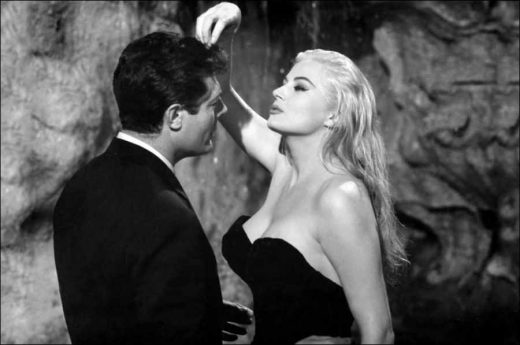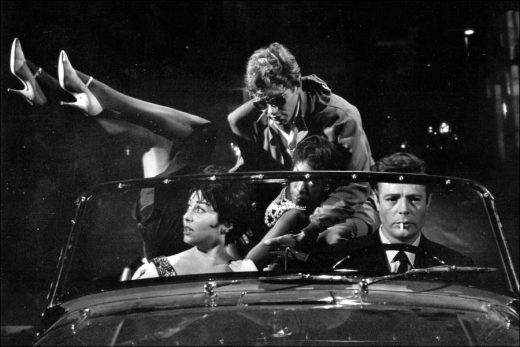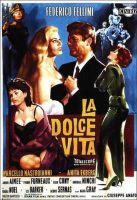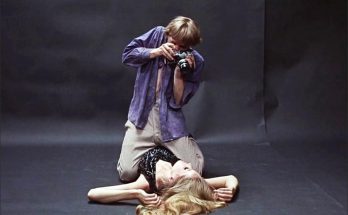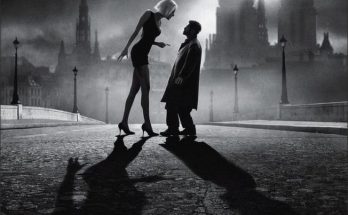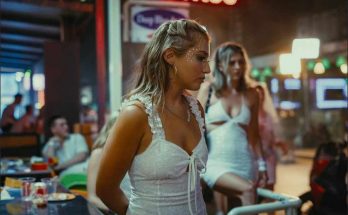La Dolce Vita movie review. Master director Federico Fellini, nicknamed “Maestro”, owes his name becoming synonymous with creativity and imagination to his two masterpiece, La Dolce Vita (1961) in the early 1960’z.
Fellini’s unique style in these films was so unique and creative that a new word had to be invented to describe his cinema. The word “Felliniesque”, which came into circulation with the worldwide sensation La Dolce Vita, has been used ever since to describe a dreamy, surreal atmosphere nourished by imagination, adorned with symbols.
The music of Italian composer Nino Rota, who has written his signature in almost all of the master director’s films, also has a great share in the Felliniesque atmosphere of Fellini’s unforgettable classics, La Dolce Vita and Eight and a Half, which combine his magnificent visual aesthetics with his unbridled imagination.
Fellini’s Palme d’Or award-winning film La Dolce Vita presents a panorama of high-society life in late 1950s Rome from the perspective of tabloid journalist Marcello, played by Marcello Mastroianni. This unforgettable classic, magnificent and epic in cinemascope format, reveals the glittering yet barren world of the high society members who frequent the bars on Rome’s famous Via Veneto Street and the barren relationships between them.
Instead of a plot based on a cause-effect chain, the film has a fragmented, episodic narrative structure that resembles a mosaic. Marcello’s path intersects with many characters throughout the film, as he pursues sensational news by chasing socialite figures, movie stars, and members of the aristocracy day and night, together with Paparazzo, the magazine photographer who introduced the word “paparazzi” to our vocabulary.
Among the most memorable of these characters is Maddalena, who seeks pleasure, is unsatisfied, and cannot escape boredom even though she is as rich as Croesus; We can list Steiner, who inexplicably killed his two children and committed suicide even though he seemed like an exemplary intellectual with an ideal family life, and Sylvia, the Hollywood star who blew Marcello’s mind with her charm. The scene where Sylvia, played by Anita Ekberg, who became instantly famous with her role in this movie, enters the pool of the Trevi Fountain is undoubtedly one of the most iconic scenes in the history of cinema.
In La Dolce Vita, which portrays a society that is emotionally barren and in complete collapse, Marcello, on the one hand, indulges in crazy night entertainments and orgies, and on the other hand, longs for a more intellectual, more meaningful life. However, the film ends with a finale that shows that there is no salvation on the horizon for Marcello, who chooses to put aside his dream of becoming a serious writer and become a part of the derailed world of pleasure.
In the symbolically charged finale of La Dolce Vita, the voice of the angelic young woman, the symbol of purity and innocence, who contrasts with the decadent life depicted in the film, does not reach Marcello on the other side of the beach. La Dolce Vita, which reveals the alienation and shallowness that dominates the lives of pleasure-loving high society members who indulge in debauchery in sumptuous nightclubs and luxurious seaside villas, is considered one of the most competent social criticisms to be seen on the silver screen.
This Fellini classic, which has a magnificent visuality in every aspect, from carefully calculated and complex camera movements to the eye-catching costume design, owes its magic partly to Nino Rota’s music. We first hear the theme music by Rota, which accompanies Marcello’s adventures in the background with various variations in the film, as the opening credits roll.
This music, which sometimes takes on a cheerful tone throughout the film, sometimes slows down and acquires a touching tone, sometimes serves to underline an emotion and sometimes serves to add tempo to the film. The visual richness that dominates the film, loaded with chaotic energy, almost finds its auditory equivalent in Rota’s polyphonic music with jazz tones.
All about La Dolce Vita movie.
La Dolce Vita (1961)
Directed by: Federico Fellini
Starring: Marcello Mastroianni, Anita Ekberg, Anouk Aimée, Yvonne Furneaux, Magali Noël, Alain Cuny, Nadia Gray, Annibale Ninchi, Valeria Ciangottini, Evelyn Stewart, Audrey McDonald
Screenplay by: Federico Fellini, Ennio Flaiano, Tullio Pinelli, Brunello Rondi
Production Design by: Piero Gherardi
Cinematography by: Otello Martelli
Film Editing by: Leo Catozzo
Costume Design by: Piero Gherardi
Music by: Nino Rota
MPAA Rating: None.
Distributed by: Astor Pictures Corporation
Release Date: April 19, 1961
Visits: 44
